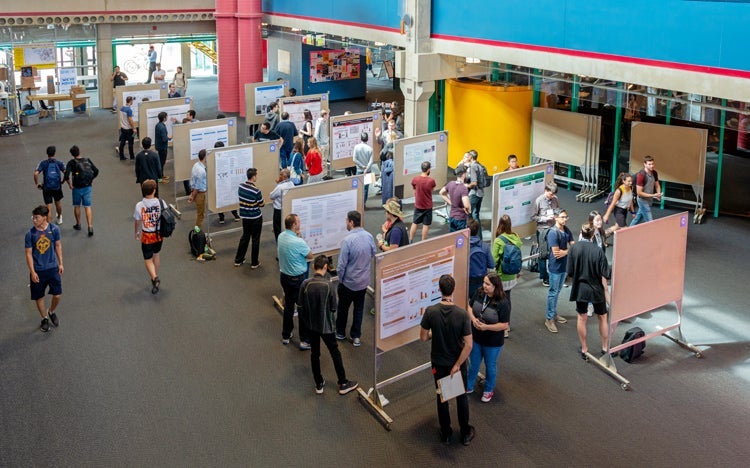Vic DiCiccio named honorary member of the University of Waterloo
Vic DiCiccio has been designated an Honorary Member of the University of Waterloo at the 2019 Fall Convocation for his outstanding service to the University.
Vic DiCiccio has been designated an Honorary Member of the University of Waterloo at the 2019 Fall Convocation for his outstanding service to the University.
Chengnian Sun recently joined the David R. Cheriton School of Computer Science as an Assistant Professor. His research interests are in software engineering and programming languages. His work focuses on techniques, tools and methodologies for improving software quality and developers’ productivity.
Researchers have developed a powerful new tool that allows programmers to engage with work on their mobile devices to help make productive use of time away from their workplace.
In a new study done in collaboration with Microsoft Research, the team of researchers created a prototype tool called Mercury that lets programmers continue working on their mobile devices if they need to leave their desk to pick up when they return to their workstation. Currently, programmers often spend a substantial amount of time at their primary workstation to make productive use of their workdays.
University of Waterloo researchers have developed a novel tool that will allow user-experience designers to create more effective, personalized games and marketing campaigns.
Unlike other tools that categorize gamers by types, the new “player traits model,” along with a 25-item survey, can be used to more easily and accurately evaluate the kind of games people will enjoy. The model is based on five traits — social, aesthetic, challenge, goal and narrative.
Each year, the Cheriton Research Symposium concludes with a poster session for Cheriton Graduate Scholarship recipients. In total, 23 students participated in the 2019 Cheriton Research Symposium poster competition.

Melissa McCorriston has received a Vector Scholarship in Artificial Intelligence from the Vector Institute. These $17,500 scholarships recognize promising scholars and researchers in Ontario and support their further studies in a top provincial artificial intelligence–related master’s program.
Cheriton School of Computer Science Professors Raouf Boutaba and Srinivasan Keshav have been named Fellows of the Royal Society of Canada.
More than 75 billion Internet of Things (IoT) devices are expected to be online by 2025. These connected devices will bring many new applications to our daily lives — everything from smart thermostats that sense and adjust room temperature independently, to cameras that monitor road congestion so traffic flows more efficiently, to high data rate sensors that will make self-driving cars possible.
Researchers have developed a new voice assistant that allows people with visual impairments to get web content as quickly and as effortlessly as possible from smart speakers and similar devices.
JC Chang, a PhD student at the Cheriton School of Computer Science, his supervisor Professor Christopher Batty and Vinicius Azevedo, a postdoctoral researcher at ETH Zurich, have received the best poster award at SCA 2019, the ACM SIGGRAPH / Eurographics Symposium on Computer Animation.